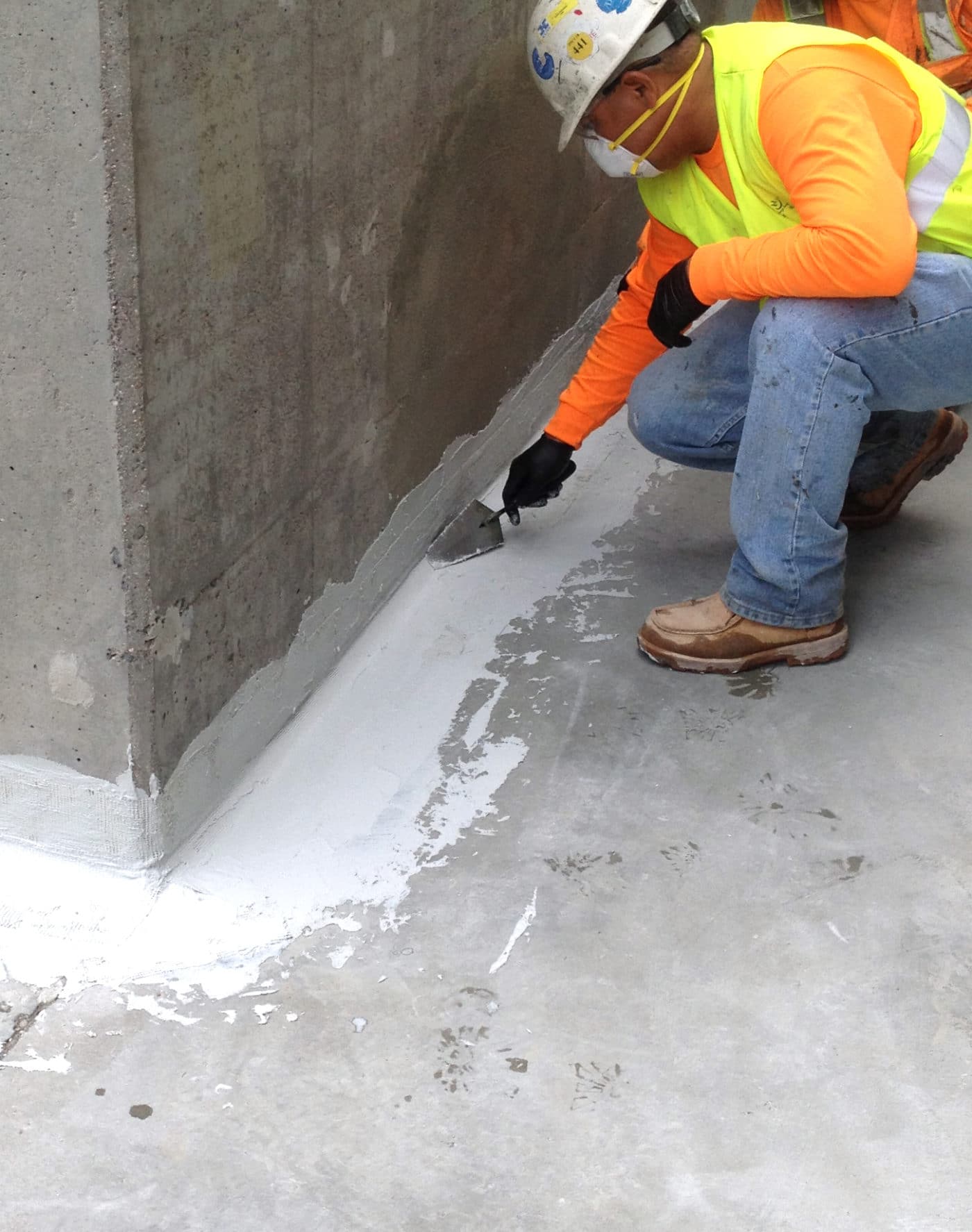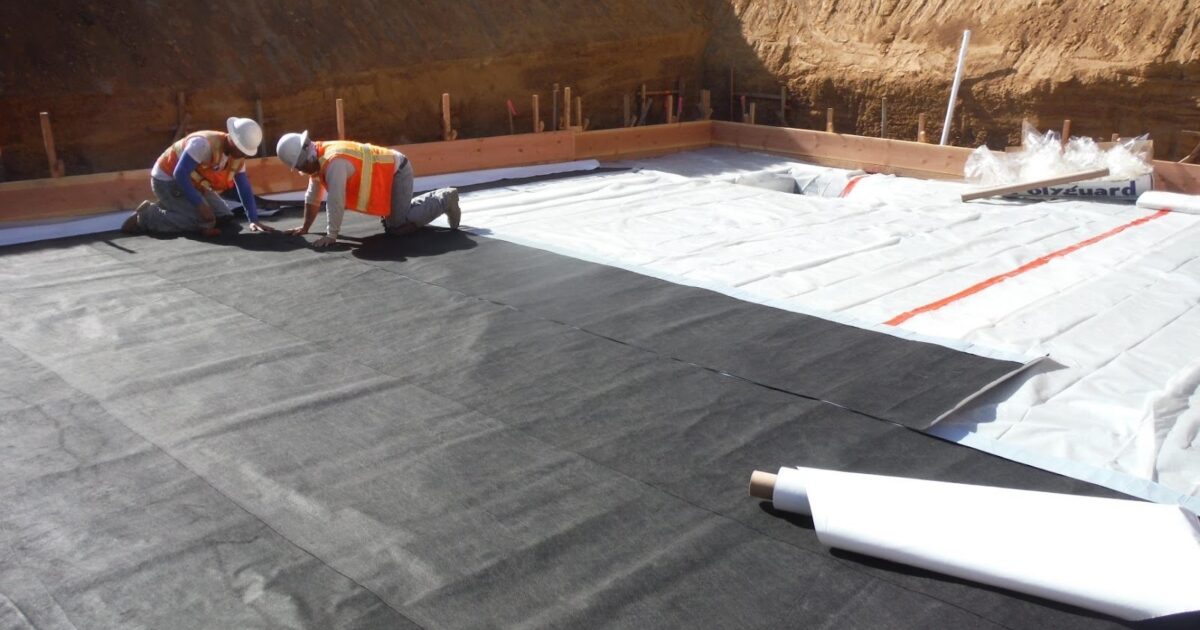How Yard drainage Omaha Reduces Flood Risk Instantly
Wiki Article
How Waterproofing Functions: A Comprehensive Take A Look At Techniques and Technologies
Waterproofing is crucial for safeguarding frameworks from moisture-related damages. It involves numerous techniques and technologies that create barriers versus water invasion. Traditional methods, such as compacted clay, exist together with modern innovations like liquid-applied membranes. Comprehending the nuances of these strategies is crucial for reliable application. The performance of any waterproofing solution pivots not just on the techniques utilized but additionally on ongoing maintenance and inspection. What are the key aspects that influence long-lasting performance?Recognizing the Fundamentals of Waterproofing
Waterproofing is a crucial process that shields structures from water invasion, which can cause significant damage over time. This technique includes the application of numerous products and methods designed to produce an obstacle against dampness. The main goal is to avoid water from penetrating surfaces, which can cause damage, mold development, and architectural instability.Various factors affect the option of waterproofing approach, consisting of the sort of framework, its area, and ecological problems. Recognizing the physics of water motion and the residential or commercial properties of different products is important in choosing an effective waterproofing solution.Effective waterproofing not just safeguards structures however additionally boosts their long life and stability. Typically, it is integrated into the layout stage of building and construction to ensure comprehensive defense. As recognition of water-related issues expands, the importance of comprehending waterproofing principles comes to be significantly clear to engineers, builders, and homeowner alike.Standard Waterproofing Techniques
Typical waterproofing methods have actually been made use of for centuries, relying upon reliable methods and materials to guard structures from water damages. Among the oldest techniques includes making use of clay, which, when compressed, produces an all-natural barrier versus wetness. Furthermore, bitumen, a sticky, black material originated from oil, has been utilized for its waterproof residential properties, often related to roof coverings and foundations.Another strategy entails the application of lime-based plasters, which give a breathable layer that enables wetness to run away while stopping water ingress. Thatch roofing, a typical method still seen in some cultures, provides exceptional waterproofing due to its securely packed straw layers.Moreover, using stone and brick has been famous, as these products are inherently resistant to water when properly set up. On the whole, typical waterproofing methods emphasize the value of choosing appropriate materials and building and construction techniques to boost durability against water breach.Modern Waterproofing Technologies
Developments in modern waterproofing technologies have changed the way frameworks are shielded from water damage. Innovative techniques such as liquid-applied membrane layers and innovative sealers have enhanced the effectiveness and flexibility of waterproofing remedies. These innovations enable smooth application, lowering the threat of leaks and making certain extensive protection over complex surfaces.Moreover, the assimilation of clever modern technologies, such as dampness sensing units and automated tracking systems, makes it possible for real-time assessment of waterproofing efficiency. This positive technique facilitates timely upkeep and reduces lasting repair service costs.Additionally, improvements in spray-applied finishings use quick application and superb bond, adapting to different substratums while supplying durable security. Techniques like polymer-modified systems even more boost adaptability and durability, making them appropriate for varied environments. Generally, contemporary waterproofing technologies not only mitigate water breach but additionally add to the long life and sustainability of frameworks, marking a considerable shift in the industry.Materials Made Use Of in Waterproofing
The efficiency of waterproofing services greatly depends on the materials made use of in their application. Numerous materials are used to develop obstacles versus water access, each with unique buildings fit for different environments. Commonly utilized products include membrane layers, layers, and sealants.Liquid-applied membranes, usually made from polyurethane or acrylic, create a seamless barrier that adjusts to intricate surface areas. Sheet membrane layers, usually constructed from rubber or polycarbonate, offer longevity and are perfect for bigger locations. Furthermore, cementitious waterproofing products, made up of cementitious compounds, supply superb bond and flexibility.Sealants made from silicone or polyurethane are crucial for joints and joints, guaranteeing complete defense. Sophisticated products, such as geo-composite membranes, combine numerous functions, boosting efficiency. Generally, the option of waterproofing materials is important in achieving durable and effective water resistance, tailored to details task needs and ecological problems.
Usual Applications of Waterproofing
Waterproofing plays a vital role in various sectors, guaranteeing the long life and stability of structures. Common applications consist of property solutions that secure homes, commercial framework that safeguards organizations, and industrial setups that need robust security against moisture. Understanding these applications highlights the relevance of waterproofing in maintaining both safety and functionality across different environments.Residential Waterproofing Solutions
Lots of homeowners face obstacles with dampness intrusion, making efficient property waterproofing options vital. Different approaches exist to address this issue, consisting of exterior and interior waterproofing systems. Inside options typically entail the application of sealers and layers to cellar wall surfaces, which aid stop water infiltration. Exterior approaches normally consist of the installment of drain systems and waterproof membranes that divert water away from the foundation.Additionally, homeowners might think about sump pumps to eliminate water accumulation and dehumidifiers to regulate humidity levels. Correct grading and making use of gutters additionally play an essential role in taking care of water flow around the home. By carrying out these techniques, property owners can greatly decrease the threat of water damage and mold growth, guaranteeing a completely dry and safe living atmosphere.
Commercial Infrastructure Protection
Reliable waterproofing services play an important role in the defense of industrial infrastructure. French drain installation Omaha. These methods are vital for securing buildings, car park frameworks, and bridges from water damage, which can jeopardize architectural integrity and bring about expensive repairs. Usual applications include the installation of membranes, finishings, and sealers that create obstacles versus moisture seepage. Locations such as basements, roofing systems, and outside wall surfaces are typically prioritized to assure longevity and durability. Additionally, waterproofing systems can enhance energy effectiveness by protecting against water-related problems that might cause mold growth and wear and tear. By browse around this web-site applying robust waterproofing measures, homeowner can secure their financial investments and preserve operational performance, eventually adding to the general sustainability of commercial centersIndustrial Applications Summary
While various industries face special difficulties, the requirement for reputable waterproofing solutions remains a continuous in industrial applications. Industries such as production, building, and power commonly experience environments where moisture exposure can endanger architectural honesty and operational performance. In producing facilities, waterproofing is crucial for protecting machinery and materials from water damages. In construction, it safeguards foundations and cellars against groundwater seepage. The energy field relies on waterproofing for the protection of tools in hydroelectric plants and offshore frameworks. In addition, food processing markets use waterproofing to guarantee hygiene and conformity with safety standards. In general, reliable waterproofing options are important you can find out more for enhancing longevity, safety, and performance across different industrial setups.
Maintenance and Longevity of Waterproofing Solutions
Waterproofing solutions are designed to offer long-lasting protection versus wetness breach, regular maintenance is crucial to assure their performance and long life. Routine examinations play a significant function in recognizing prospective concerns such as splits, peeling off, or indicators of water damage. Addressing these issues quickly can protect against additional wear and tear and pricey repairs.Additionally, cleaning up the surface area of waterproofed locations helps eliminate dust and particles that could jeopardize the honesty of the waterproofing barrier. It's likewise suggested to reapply safety coatings or sealers as recommended by makers to keep perfect performance. Environmental variables, such as UV direct exposure and extreme weather, can influence the life-span of waterproofing materials, making routine assessment crucialOften Asked Inquiries
Can Waterproofing Be Applied in Cold Weather Condition?
The concern of applying waterproofing in cold weather elevates problems regarding bond and curing. Numerous items may not execute at their best in reduced temperatures, necessitating careful selection and factor to consider of details standards for reliable application.Exactly How Long Does Waterproofing Commonly Last?
The period of waterproofing effectiveness differs based upon products and environmental elements. Typically, it can last from 5 to ten years, but regular upkeep and evaluations are important to ensure peak efficiency and durability.Is DIY Waterproofing Effective and Safe?
The performance and security of do it yourself waterproofing depend upon numerous factors, including worldly high quality and application technique. While some individuals accomplish satisfactory outcomes, others may encounter concerns that compromise long-lasting security and structural integrity.What Are the Indications of Failing Waterproofing?
Indicators of failing waterproofing consist of visible water discolorations, peeling off paint, mold and mildew development, mildewy smells, and dampness in wall surfaces or ceilings - Basement waterproofing Omaha. These indications suggest jeopardized obstacles, requiring timely evaluation and potential removal to stop further damagesHow Do I Choose the Right Waterproofing Service Provider?

Report this wiki page